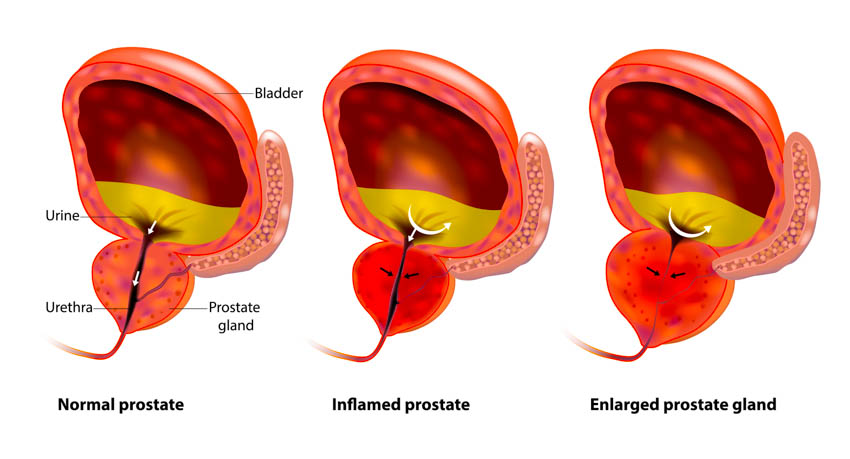
Acupuncture alleviates prostatitis and reduces relapse rates. Jiujiang Hospital of Traditional Chinese Medicine researchers compared usual pharmaceutical treatment with acupuncture. The results show that acupuncture promotes local blood circulation, improves urethra and bladder function, and alleviates overall symptoms correlated with prostatitis.
Drug therapy produced significant results and limited the relapse rate to 10%. In an important discovery, acupuncture reduced the relapse rate to 3%, significantly outperforming the drug therapy group. At HealthCMi, this provokes an interesting question. What would the results look like in a combined therapy protocol? We look forward to research investigating an integrative medicine protocol.
In the study, National Institutes of Health Chronic Prostatic Symptom Index (NIH-CPSI) scores, Self-rating Depression Scale (SDS) scores, white blood cell counts in the prostatic fluid during routine examinations (EPS), norepinephrine (NE) content, and recurrence rates were compared between an acupuncture group and a drug therapy group. The efficacy levels were based on a 4-level scale:
- Recovered: symptoms disappeared, NIH-CPSI score decreased by over 90%
- Significantly effective: symptoms significantly relieved, NIH-CPSI score decreased by 60% to 89%
- Effective: symptoms relieved, NIH-CPSI score decreased by 30% to 59%
- Ineffective: symptoms persisted or aggravated
In the drug therapy group, 27 cases recovered, 15 were significantly effective, 10 were effective, and 8 were ineffective. In the acupuncture group, 44 cases recovered, 10 were significantly effective, 4 were effective, and 2 were ineffective. The results show that acupuncture significantly outperforms the prescribed drug therapy protocol. [1]
Notably, the NIH-CPSI score dropped from 26.13 ±6.21 to 10.27 ±5.29 in the acupuncture group while the control group showed a smaller decline from 27.15 ±6.26 to 15.42 ±6.19. The WBC and NE in the acupuncture group lowered more than in the drug therapy group. Also, the relapse rate we noted earlier of 3% in the acupuncture group was significantly lower than in the drug control group. The researchers note that acupuncture safely activates blood flow in the affected area, reduces inflammation, and reduces local pain.
At HealthCMi acupuncture continuing education online, we find the results consistent with prior investigations. The efficacy of acupuncture and herbal medicine within the Chinese medicine jing-luo system for the treatment of prostatitis is both ancient and modern. Classical texts from antiquity and modern clinical and laboratory research consistently demonstrate that acupuncture is an effective treatment protocol for the alleviation of prostatitis. In addition, we find the acupuncture point selections chosen by the researchers consistent with accepted functions and indications for each acupoint.
The acupuncture and drug control groups received independent 30-day treatments. The drug group received 0.25 mg clarithromycin (twice daily) and 2 mg terazosin (once daily), for 30 days. Clarithromycin is a macrolide antibiotic, a class of antibiotics developed from soil-based bacteria. Macrolides are particularly effective against gram-positive cocci (spherical bacteria). At lower concentrations, macrolides tend to be bacteriostatic (prevents bacteria from multiplying). At higher concentrations, macrolides are bactericidal (kills bacteria). Other macrolides include erythromycin and azithromycin.
Terazosin belongs to the class of drugs termed alpha-adrenergic blockers. As a result, terazosin relaxes the veins and arteries, thereby allowing greater blood flow. It is effective in relaxing the muscles of the prostate and neck of the bladder. This facilitates urination. Although used for the treatment of hypertension, terazosin is also used to improve urination function for men that have been diagnosed with an enlarged prostate (benign prostatic hyperplasia). For the acupuncture group, the primary acupoints were the following:
- CV3 (Zhongji)
- CV1 (Huiyin)
- KD3 (Taixi)
- LV3 (Taichong)
Groups of supplementary acupoints were selected in a rotating sequence during consecutive visits. Session 1 received the following:
- GV14 (Dazhui)
- LI4 (Hegu)
- LU5 (Chize)
Session 2 received the following:
- BL28 (Pangguangshu)
- SP9 (Yinlingquan)
- LV2 (Xingjian)
Session 3 received the following:
- BL54 (Zhibian)
- SP6 (Sanyinjiao)
Session 4 received the following:
- BL23 (Shenshu)
- CV4 (Guanyuan)
Session 5 received the following:
- BL32 (Ciliao)
- ST25 (Tianshu)
- ST36 (Zusanli)
For each treatment session, two to three primary acupoints combined with a group of supplementary acupoints were used. For Zhongji and Guanyuan, needles were inserted obliquely toward Huiyin. The rest of the points received acupuncture stimulation with a mild reinforcing-attenuating method. Needles remained for 20 minutes.
The randomization appears within normal parameters for the investigation. The study used a sample of 120 patients admitted into the hospital from May 2019 to May 2020. The 120 patients were randomly categorized into a drug control group and an acupuncture group, with 60 patients in each group. For the drug control group, age range was 35 to 62 years. Mean age was 49.27 ±2.18 years. The course of disease ranged from 3 to 16 years and the mean course of disease was 8.26 ±1.35 years. For the acupuncture group, the age range was 34 to 63 years and the mean age was 50.12 ±1.37 years. The course of disease ranged from 3 to 15 years and the mean course of disease was 8.37 ±1.28 years.
The results demonstrate that acupuncture benefits patients with prostatitis. In addition, the acupoint selection is supported by the research. Based on the data, acupuncture is an important referral option for patients with prostatitis.
Reference:
1. Hou Jin, Zhu Quan, Observation on The Effect of Acupuncture-based Clinical Treatment Program Applied to Chronic Prostatitis, Contemporary Medicine, Aug.2021, Vol.27 No. 23 Issue No. 610.


